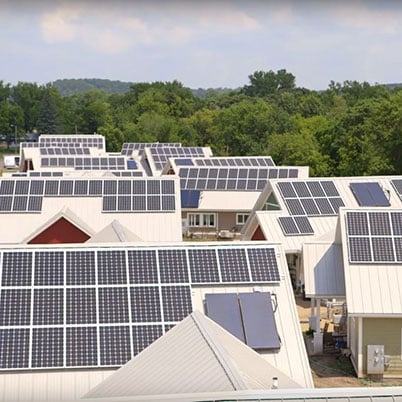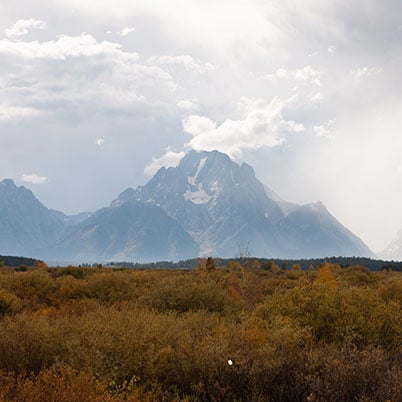Seeing green

.jpg?h=402&iar=0&w=402&rev=477d3f98015f485b8452bb533294571b)

Two Standout Green Building Projects
Green building has increasingly become an established element of construction. According to the National Association of Home Builders’ 2017 Green SmartMarket briefs, green construction is growing quickly amongst single-family and multifamily home builders. In the survey, one-third of respondents said that green building is a “significant”—meaning more than 60 percent—portion of their portfolio. The National Association of Home Builders believes the number of builders this busy with green building will increase from a third to half by 2022.
But eco-friendly building isn’t limited to residential construction. As sustainable design and construction continue to gain traction, a few recent projects stand out as examples of how it can be done.
Eco Village, St. Croix Valley in River Falls, Wisconsin
Eco Village is the first Habitat for Humanity community to include on-site renewable energy features like photo-voltaic arrays, super-insulated walls, and existing energy-efficient window technology using Andersen 400 Series products. An intentional neighborhood, not just a housing development, Eco-Village is based on a LEED for Homes Platinum carbon-negative, net zero energy approach to environmental, economic and social applications.
Eighteen homes—single-family and duplex units—and a community center on five acres of land share solar and geothermal renewable energy systems, walkways, community produce gardens, “edible landscapes,” and green spaces. Designed to benefit the local ecology and promote responsible green building principles, Eco Village’s environmental goals include:
- Reduce water use by 50 percent through rain/storm water harvest application in landscaping and gardening
- Achieve net-zero energy use for homes
- Divert 90 percent of the construction waste from landfills
- Create durable homes built to be tornado resistant and protected by fire sprinkler systems
The project first broke ground in 2012; after its completion in 2014, it won Green Builder Magazine’s Best Affordable Project.
Yellowstone National Park
In order to meet its energy goals through the Yellowstone’s Strategic Plan for Sustainability, the national park took on two major green building projects. The first involved the 16 residential cabins at the Lamar Buffalo Ranch. Originally established in 1907 as a place to preserve one of the last free-roaming bison herds, buildings on the site were constructed in additional phases from 1915 through the 1930s. The location supported bison ranching until the 1950s, when the buildings were converted for other use. Today, they host visitors from around the world looking to enjoy lodging in a historic wilderness setting.
To meet sustainability goals, the park needed to improve the cabins’ efficiency by installing programmable thermostats, upgrading the insulation, and replacing all the windows with energy-efficient Andersen 100 Series. With these efforts alone, the cabins have shown an average of a 50 percent reduction in fuel usage per month from the same time last year, all while maintaining the unique historic character.
The second green building project involved one of three medical facilities located within Yellowstone. The Mammoth Hot Springs clinic is the only facility open year-round serving both park staff and visitors. Built in the 1960s, a number of improvements were needed to help the facility operate more efficiently particularly new windows which were replaced with Andersen E-Series. The project team measured key energy data points before starting the retrofit; they will now measure them every 12 months to gauge the overall energy efficiency improvement.
While these are just a few examples, each project takes us collectively one step closer to sustainable energy living—a trend that is on track to continue for generations to come.